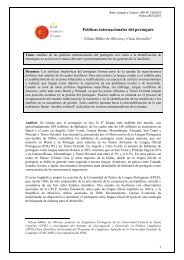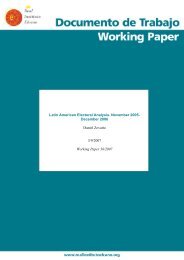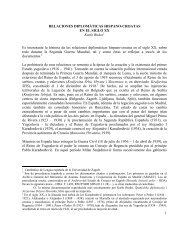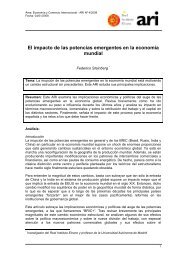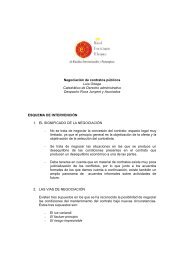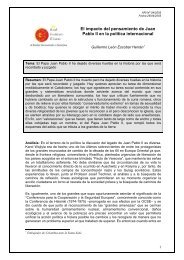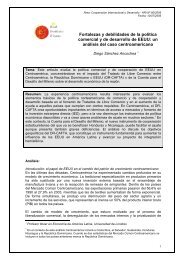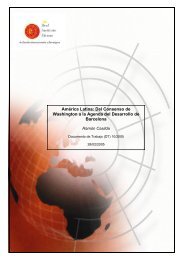Spain and the United States - Real Instituto Elcano
Spain and the United States - Real Instituto Elcano
Spain and the United States - Real Instituto Elcano
Create successful ePaper yourself
Turn your PDF publications into a flip-book with our unique Google optimized e-Paper software.
THE HISPANIC COMMUNITY 101<br />
been a take-off in <strong>the</strong> number of Spanish newspapers, radio stations <strong>and</strong> TV<br />
stations. The leading Spanish-language media company serving <strong>the</strong> Hispanic<br />
community is Univisión, which includes TeleFutura <strong>and</strong> Galavisión. The<br />
number of Spanish newspapers roughly doubled between 1990 <strong>and</strong> 2004 to just<br />
over 700 <strong>and</strong> <strong>the</strong>ir ad revenue rose eightfold between 1990 <strong>and</strong> 2003 to more<br />
than $800 million. Recoletos, <strong>Spain</strong>’s second-largest media group, helped to<br />
set up a chain of Spanish-language newspapers in Texas in 2004 <strong>and</strong> <strong>the</strong>n sold<br />
its stake in May 2005, while Grupo Prisa, <strong>Spain</strong>’s largest multimedia group,<br />
has radio stations <strong>and</strong> sells textbooks to learn Spanish <strong>and</strong> English. Caracol<br />
Miami is <strong>the</strong> leading radio station among Hispanic audiences in Miami, <strong>and</strong> in<br />
January 2005 it received permission to boost its broadcasting power to reach<br />
audiences in sou<strong>the</strong>rn Florida. In April, Prisa acquired <strong>the</strong> 690AM (XTRA)<br />
radio station, which broadcasts in Los Angeles <strong>and</strong> sou<strong>the</strong>rn California. The<br />
enormous interest in news from <strong>Spain</strong> <strong>and</strong> Latin America among <strong>the</strong> Hispanic<br />
community is underscored by <strong>the</strong> spectacular growth in <strong>the</strong> Hispanic news<br />
service of Efe, <strong>Spain</strong>’s state-owned news agency, which earns more in <strong>the</strong><br />
<strong>United</strong> <strong>States</strong> than from <strong>the</strong> whole of Latin America.<br />
Exhibit 5.7 Spanish-Speaking Population of Countries (millions)*<br />
The largest number of Spanish businesses is in <strong>the</strong> state of Florida, whose<br />
largest city, Miami, is called <strong>the</strong> “capital of Latin America”, as it is <strong>the</strong> city of<br />
reference for Latin American business <strong>and</strong> finance <strong>and</strong> where one in every six<br />
people speak Spanish at home. Florida, whose Hispanics are predominantly<br />
Cuban, accounts for around 10% of <strong>the</strong> 100,000 Spaniards who live in <strong>the</strong><br />
<strong>United</strong> <strong>States</strong> (0.3% of <strong>the</strong> total population). Between 2000 <strong>and</strong> 2004, <strong>the</strong><br />
number of Spanish businesses in Florida rose from 200 to more than 350 (more<br />
than in China), <strong>and</strong> two-way trade amounted to $1.2 billion, making <strong>Spain</strong><br />
Florida’s 20th largest trading partner <strong>and</strong> <strong>the</strong> fifth among European countries<br />
(see Exhibit 5.8). One factor in <strong>Spain</strong>’s relative success in Florida, albeit an<br />
intangible one, is <strong>the</strong> greater importance (compared to Anglos) that both<br />
Spaniards <strong>and</strong> Hispanics attach to personally getting to know <strong>the</strong>ir business



